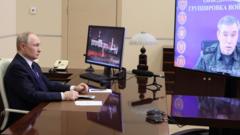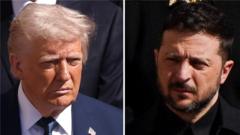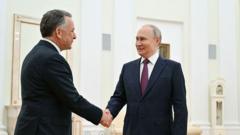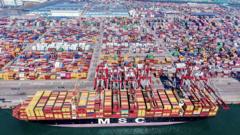In the recent political climate following President Trump's return to office, his administration's strategies seem to echo Russian President Vladimir Putin’s ambitions. If Putin were to create a wishlist of favorable actions from the U.S. government, the first 100 days of Trump’s term could be seen as an ideal manifestation. Key elements include encouraging Ukraine to concede territory to Russia, signaling potential sanctions relief, and providing tacit support for Russia’s actions in Ukraine.
Trump's Return: A Boost for Putin's Agenda in Ukraine

Trump's Return: A Boost for Putin's Agenda in Ukraine
As tensions rise in Ukraine, many observers note that Trump's actions may favor Russian interests, presenting a controversial foreign policy landscape.
During the latest negotiations in Moscow led by Trump's envoy Steve Witkoff, it became clear that the U.S. stance may allow Russia to retain territories unlawfully seized and further restrict Ukraine from NATO membership. Beyond that, Trump's administration appears to be inadvertently facilitating other aspects benefiting Moscow; a noticeable disbanding of U.S. institutions that have traditionally countered Russian narratives, including the National Endowment for Democracy and Voice of America, suggests a significant shift in the U.S. foreign policy mechanism.
While U.S. tariffs on various imports might suggest a tough stance, Trump has notably exempted Russia from some tariff measures while still imposing them on Ukraine—a move seen as contradictory. Discussions indicating a potential lifting of sanctions on the Nord Stream 2 gas pipeline also highlight a reversal from Trump’s initial adversarial view towards the project, raising concerns about its possible implications for European energy independence and stability.
In an intricate geopolitical dance, Trump's alignment with Putin's interests presents a complex narrative, where traditional alliances may be jeopardized, and the repercussions extend well beyond the immediate conflict in Ukraine, shaping broader global dynamics.
While U.S. tariffs on various imports might suggest a tough stance, Trump has notably exempted Russia from some tariff measures while still imposing them on Ukraine—a move seen as contradictory. Discussions indicating a potential lifting of sanctions on the Nord Stream 2 gas pipeline also highlight a reversal from Trump’s initial adversarial view towards the project, raising concerns about its possible implications for European energy independence and stability.
In an intricate geopolitical dance, Trump's alignment with Putin's interests presents a complex narrative, where traditional alliances may be jeopardized, and the repercussions extend well beyond the immediate conflict in Ukraine, shaping broader global dynamics.






















